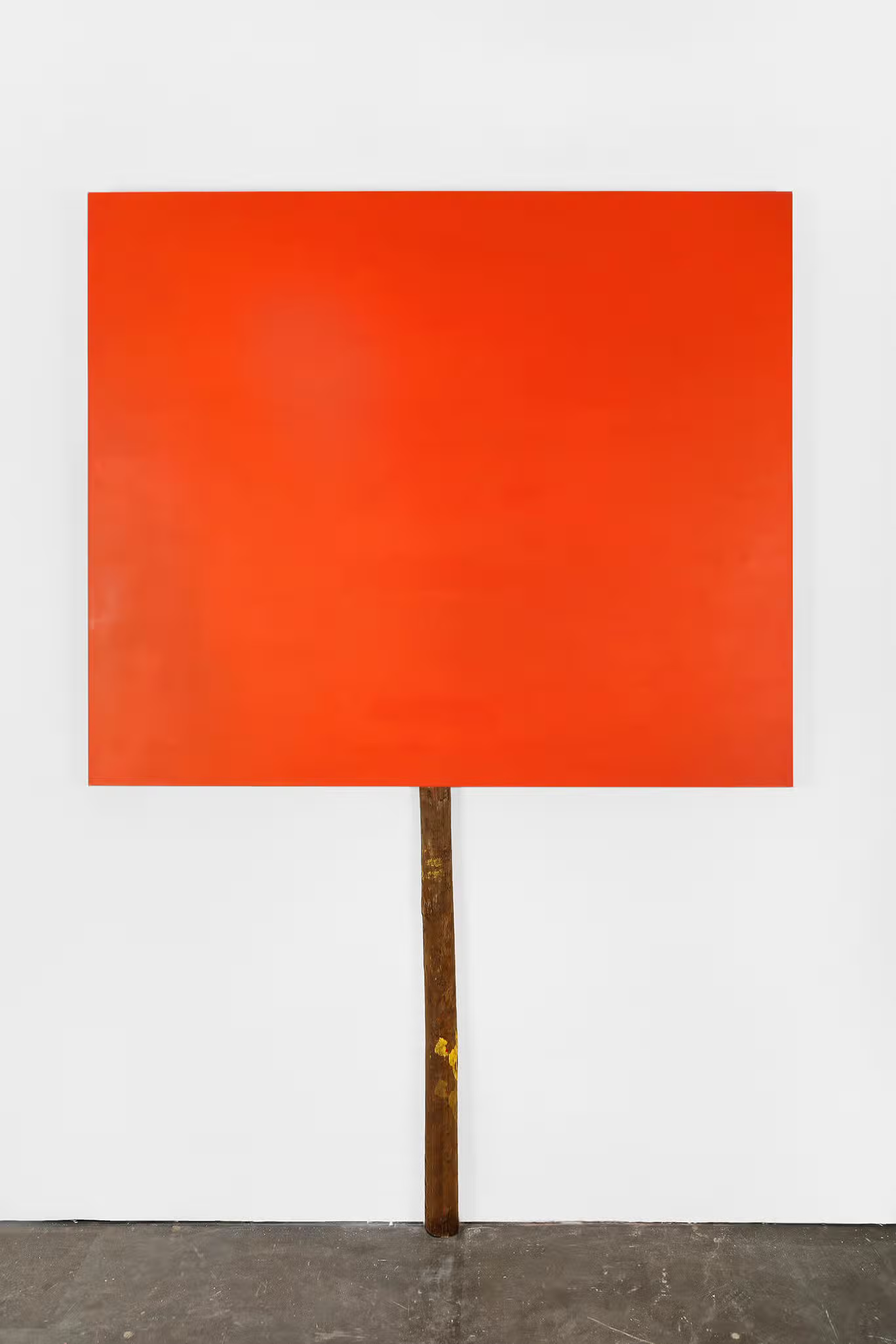
Denzil Hurley, Orange Glyph, 2019. Image courtesy of the artist's estate and Canada.
I am looking at a stick. It is holding up a large, orange square canvas with a glow that radiates off its observants. Titled Orange Glyph, 2019, it is a part of a series of paintings by Denzil Hurley, who passed away in 2021 at 72. Displayed in the front room of Canada, the work faces a window that looks out to the street. Outside it is raining, but as I stand in front of the painting, I feel as though I am watching the sun rise, as if I can feel its warmth on my skin for the first time in too long. Yesterday, David Lynch died, a monumental influence on my creative life. The night before that, my great-aunt passed away after two years of slowly going blind. Both these deaths happened due to evacuation orders during the wildfires in LA, the city I spent much of my youth and where friends and family still remain.
In New York, the rain is a reminder to be grateful for water. Still, it prompts us to seek refuge, and today mine is this gallery. Here, Orange Glyph is the first work you see when you enter; an outline of a protest sign, it is the anchor for “Beyond the Frame: Abstraction Reconstructed,” a two-person show featuring Hurley and Reginald Sylvester II, curated by gallery co-owner Christiana Ine-Kimba Boyle.
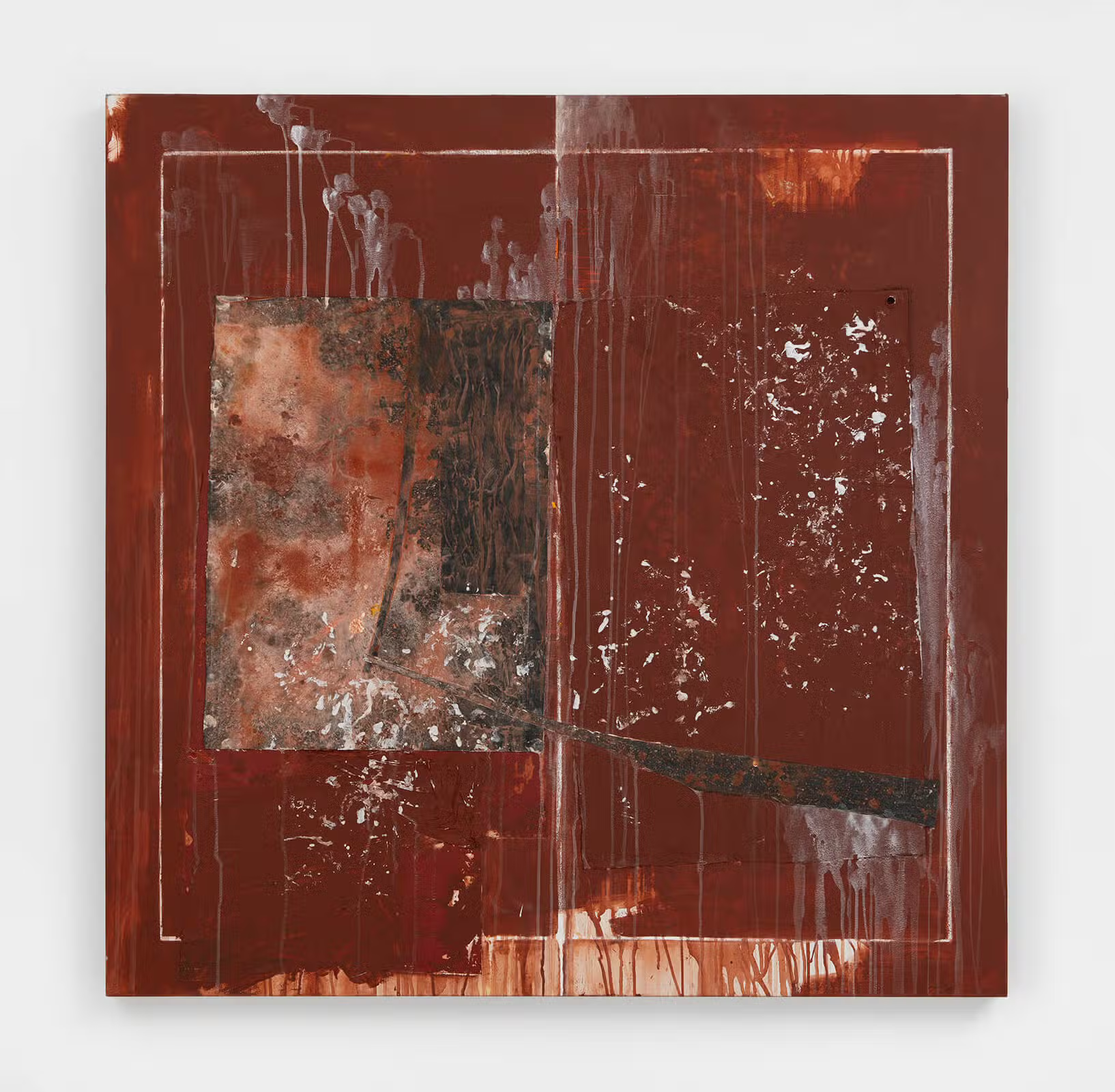
Reginald Sylvester II, Semi 009, 2024. Image courtesy of the artist and Canada.
Boyle greets me in front of the painting, with a calming presence, at home in this space in which she holds a subtle stewardship of, watched over by Hurley. As we move down the hallway, my vision fixes on one piece against the back wall: a black rectangle the shape of a doorway stands on a wooden block, leaning against the wall. It has a magnetic pull.
Entering the main space, Sylvester’s works enter my field of vision, carefully staged side-by-side with Hurley’s, making their visual parallels obvious. Black. Blue. Red. Silver. Each of Sylvester’s canvases evokes a singular tone and mood, composed of many things: stretched rubber covered in acrylic (a reference to the material’s colonial history), vivid pastels, found objects from his studio space, military tent shells sourced secondhand and referencing his childhood as an army brat, born in North Carolina and raised in Oakland, California.
_result_1.avif)
Reginald Sylvester II, Semi 007, 2024. Image courtesy of the artist and Canada.
While Sylvester never met Hurley—who grew up in Barbados and later lived in Seattle—both men push the form of abstraction beyond the bounds of one-dimension composition. Their works are found-objects in and of themselves. Hurley’s contain remnants, wood and metal, that appear to be sourced from the outer stretches of the universe, from a time and place unknown. Sylvester’s materials are abstracted by a glossed paint over them, glued tightly to modern concerns, warfare, and relevant paraphernalia, and desire for meaning-making through found experience.
In the corner of the room, I observe Hurley’s work, Equal Areas, Glyph Within, Without and About, 2016–2018, in which two canvases, an upright rectangle and a square, both hang from the same aluminum plate. Are they two paintings or one sculpture? As I look around the room at both artists’ works, I begin to wonder, Are any of these really paintings? Are they not, rather, objects informed by paint?
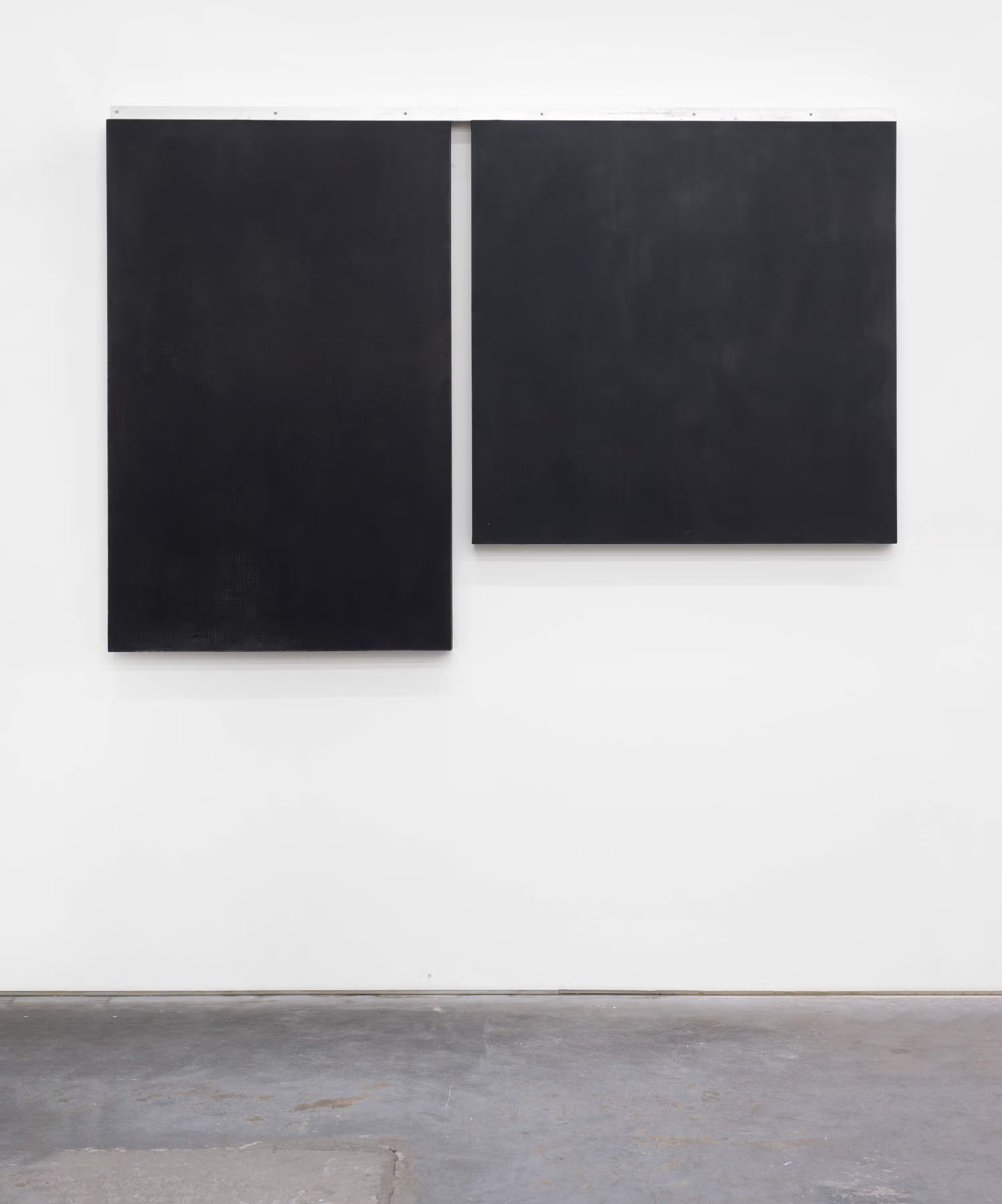
Denzil Hurley, Equal Areas, Glyph Within, Without and About, 2016-2018. Image courtesy of the artist's estate and Canada.
I approach Hurley’s piece to observe it more closely, and when I am about a foot away something incredible happens: I sense a strong odor coming from it. In my half-decade of writing about art professionally, I have never smelled a painting without being up-close to its surface. I immediately ask Boyle, almost startled, “What is that smell?” She responds, “Varnish.”
Varnish? Am I naively just observing the substance that is on virtually all oil paintings? Before I can admit my embarrassment, Boyle continues. “He painted these canvases over and over again for years. Who knows how many layers of paint are on there? That’s why it smells so strongly,” she offers. “It’s a meditation.”
_result_1.avif)
Denzil Hurley, J2#1, Portal, 2015-2017. Image courtesy of the artist's estate and Canada.
I take it in, amazed. Such a dedicated, psychotic ritual of paint, so much so that the canvas espouses, either in anguish or relief, a scent that suggests experience. Its implications are infinite. An infinite black. An infinite layering of pigment. An infinite smell of varnish. A living, breathing statement, speaking with Sylvester’s next to it. Not a painting nor an object, but a person, a life, an idea, alive forever, assembled as an artwork. An event horizon.
And then, we return to Hurley’s doorway-shaped-canvas with the metaphysical energy; it is both here and somewhere else. The work, J2#1, Portal, 2015-2017, took the artist two years to complete, a similarly long meditation. I didn’t approach it closely like I did with Equal Areas… I was almost afraid it would suck me in.
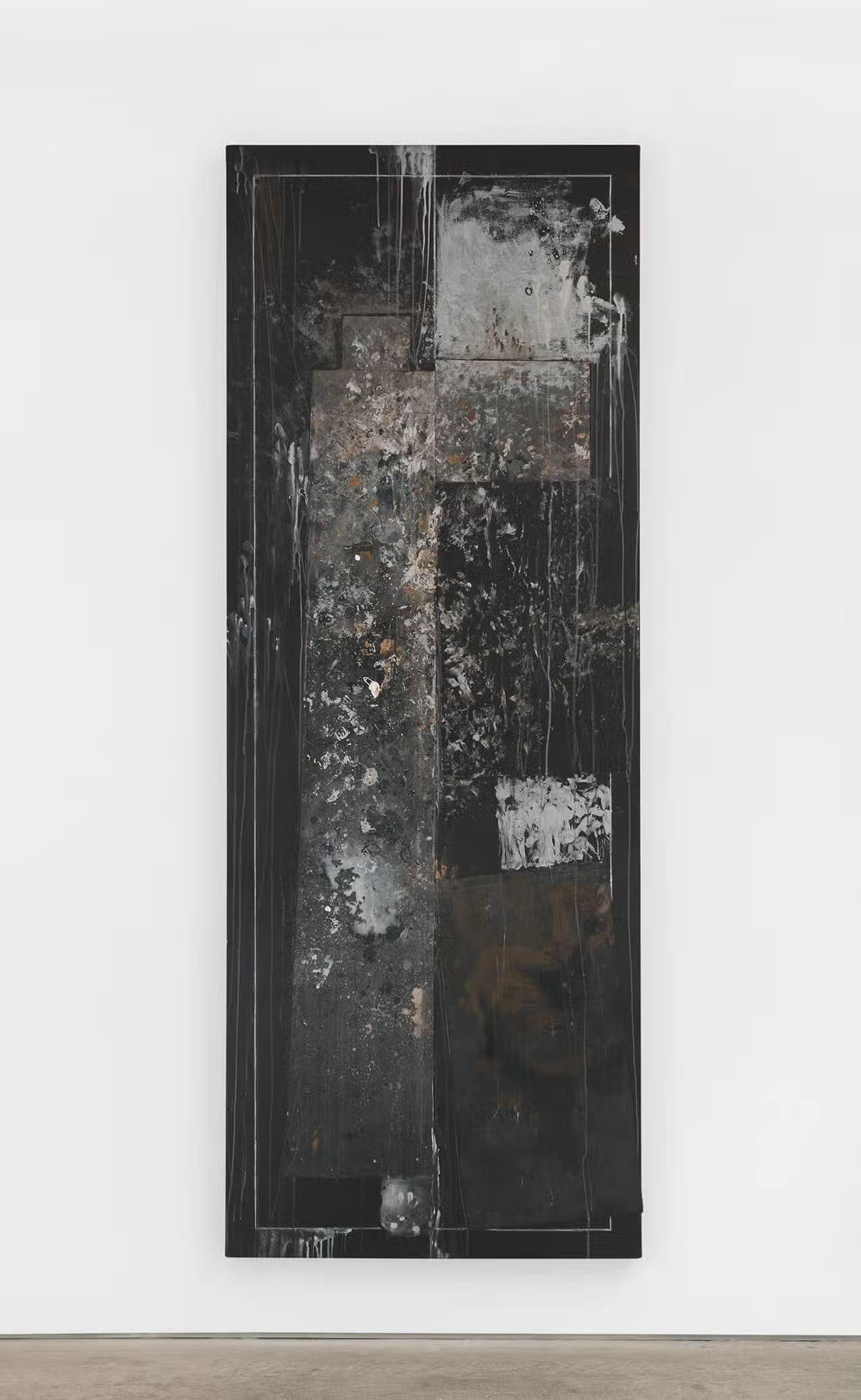
Reginald Sylvester II, Semi 004, 2024. Image courtesy of the artist and Canada.
“Many link it to the Door of No Return on Gorée Island in Senegal, a symbol of the transatlantic slave trade,” Boyle explains, adding that it might also bring to mind Hurley’s birthplace of Barbados, central to the British plantation economy and slave trading routes. “The work’s dimensions, slightly smaller than a conventional door, convey a sense of physical and psychological constraint, echoing the violence of this history.”
The thought of it begins to consume me. Tears well up in my eyes as I look into the abyss. It isn't an artwork at all: It is a black hole. It is a temporal object left in our world by Hurley before his passing, one that was meant to transcend centuries. While working on this show, Boyle spoke with Hurley’s collaborators, family members, and former students, and this dialogue can be felt in the room. This web of information originates from the black portal and sprouts throughout the gallery. Lifetimes upon lifetimes, connected through creation, fills these walls, interlinked through these objects, through these two artists: two Black men of Western origin, with interest in generational preservation, Hurley within his own personal and ancestral life, Sylvester with his father. They give objects a heartbeat.
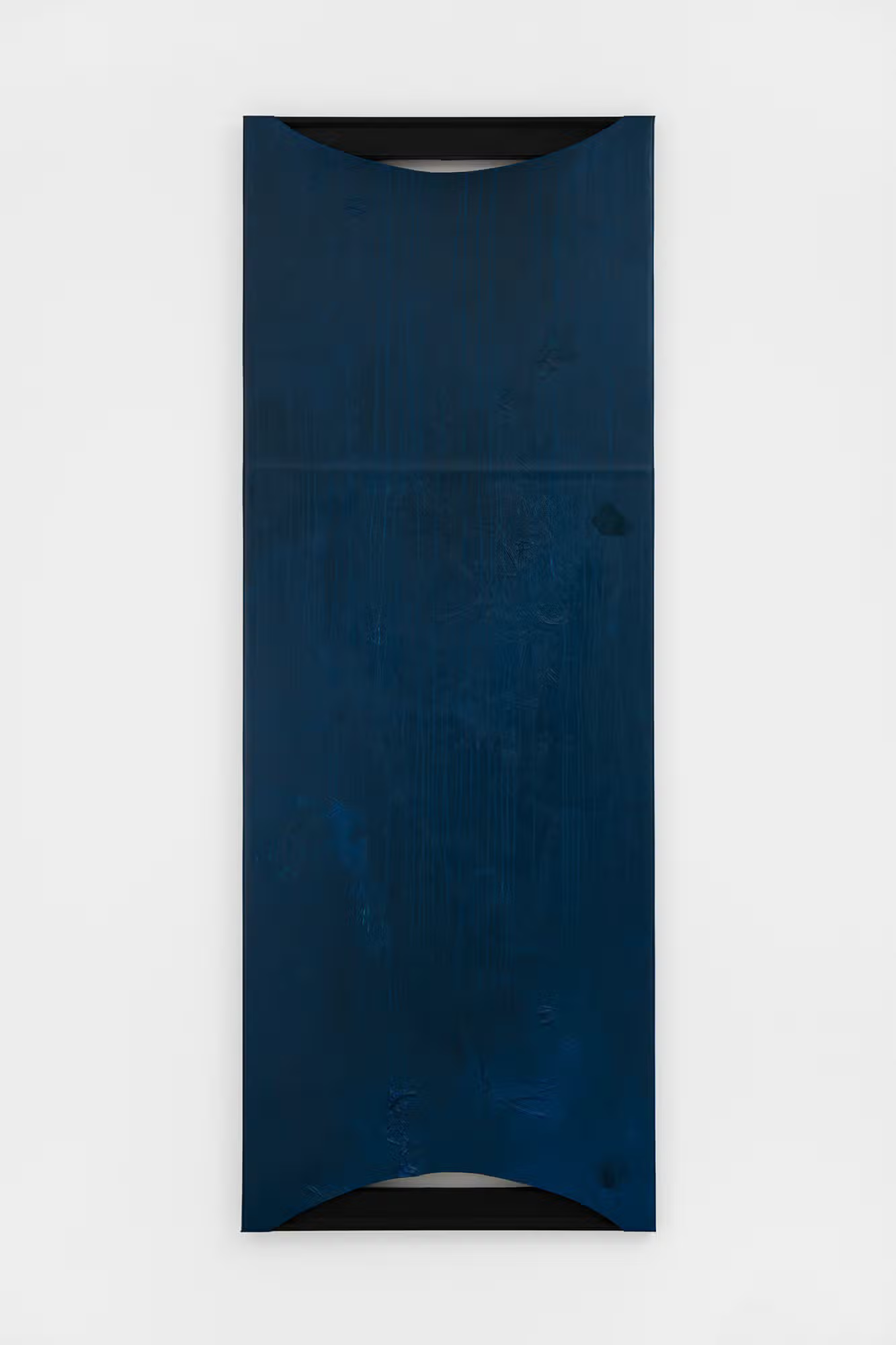
Reginald Sylvester II, Offering (Deep Blue), 2024. Image courtesy of the artist and Canada.
We enter a small, intimate room where a more obvious juxtaposition between the two men unfolds. On one wall is a drawing by Hurley titled Portal and the Deep Blue from 2012. Next to it is a larger, rubber-stretched piece called Offering, (Deep Blue), 2022. The latter sports the same doorway silhouette as Hurley’s but Sylvester had rendered it with a completely different materiality, façade, and color arrangement. Across the parallels of the works in this room, it becomes absolutely entrapping to witness how similar the two artists were thinking: against the current of an art market with a severe obsession with portraiture depicting trauma through familiar, identifiable imagery of Black bodies. Here, abstraction becomes a faithful and careful exploration of trauma.
Strip Glyph #1, 2019, by Hurley hangs on the next wall, which appears like a paragraph of blacked out text. Both artists question censorship through their work, where meaning is stratified through abstract shapes and materials superimposed atop each other. In Hurley’s works, this happens in the form of layered paint and shapes that hint at protest signs, redacted text, or antebellum doorways. For Sylvester, themes of nationalism materialize in second-hand military tents, and America’s colonial past is alluded to with his use of rubber.
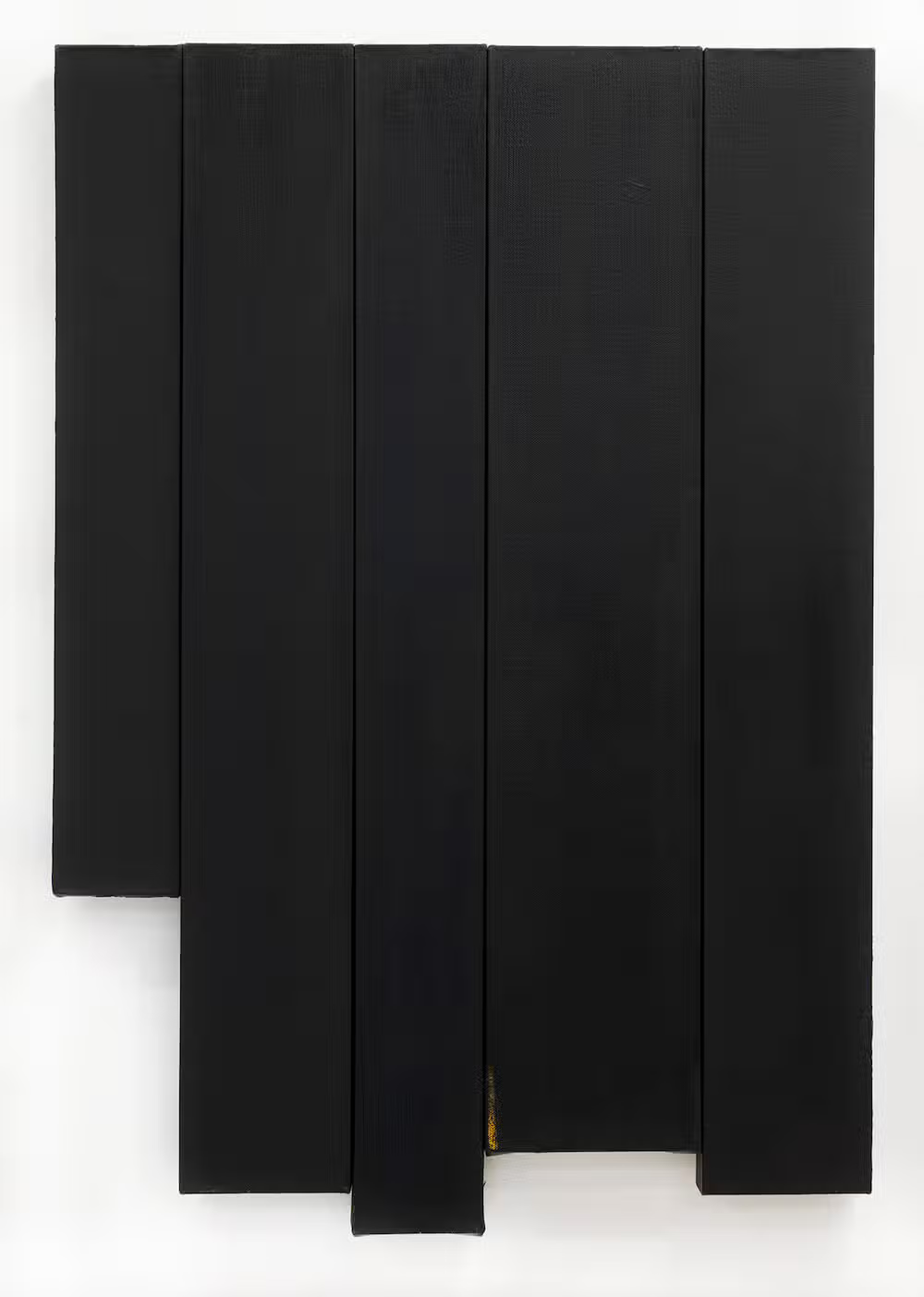
Denzil Hurley, Strip Glyph #1, 2019. Image courtesy of the artist's estate and Canada.
The two men are bound and unbound with the unforgiving nature of time. Their world views come together in harmony, orchestrated by Boyle, a curator with the gift of clarity, who understands the implications of their twinship. Back on the rainy street, I am reminded of not only why I love art but of its worth to human nature: to wake us from our sleep, to remind us of our temporary nature, and to ensure us that through creating work that enters a dialogue with others, we may live forever.
"Beyond the Frame: Abstraction Reconstructed" is on view until February 22, 2025 at Canada gallery at 60 Lispenard, New York, NY.








_result_1.avif)

_result_1.avif)



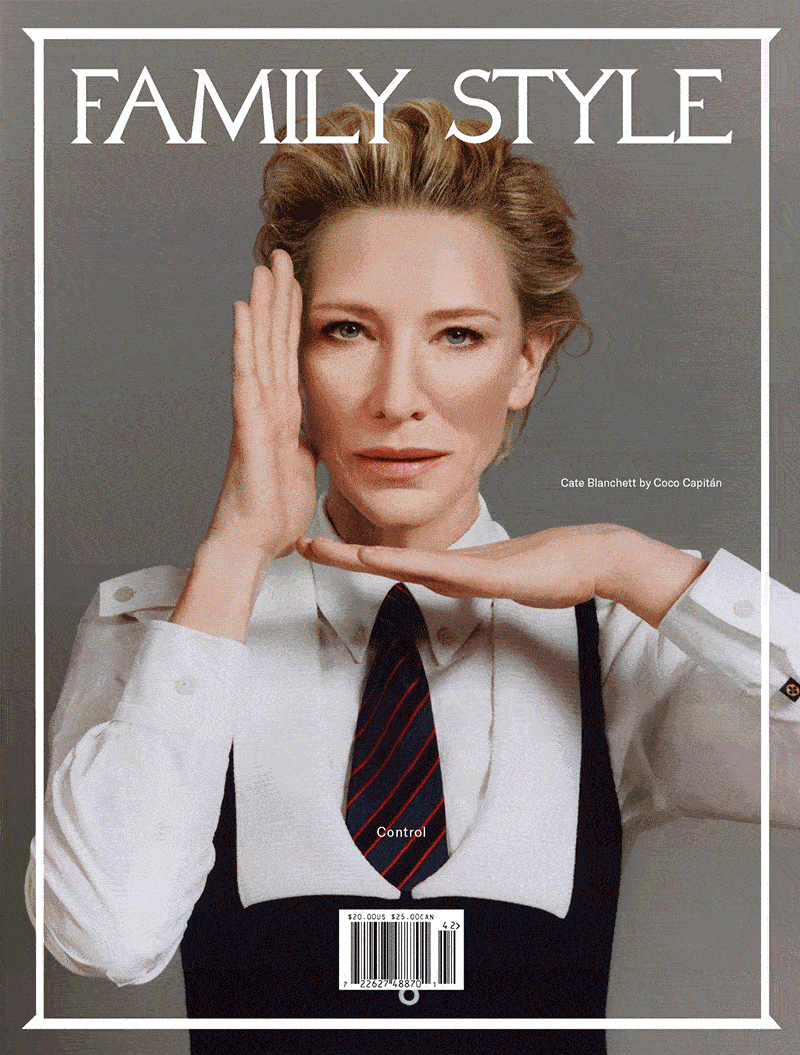


.avif)

